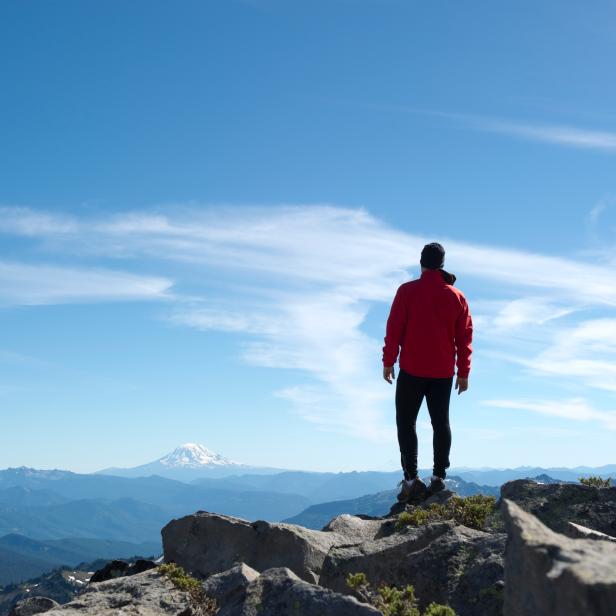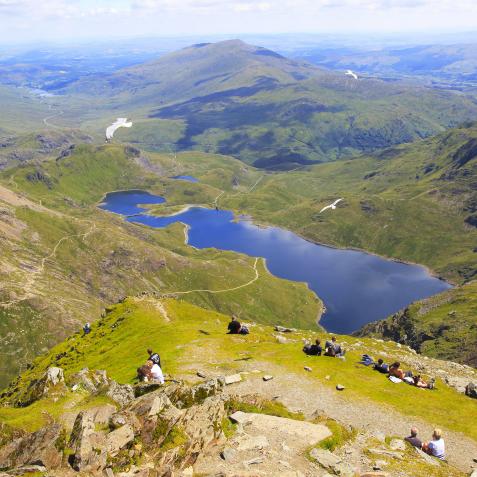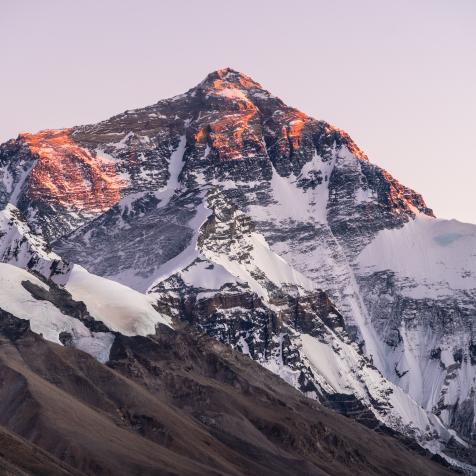
GettyImages/vernonwiley
Want to Climb a Mountain? Here are 5 Peaks Perfect for Beginners
In the mountain adventure world, just like anywhere, it's best to start small. Whether you're just getting into hiking and camping around peaks or you have your sights set on someday climbing bigger, snowier, or steeper mountains, some places are better to start than others. Regardless of your mountain pursuit, these are the best peaks to lay the foundation and get off the ground.

GettyImages/raksybH
Hiking: Grays Peak, Colorado
Colorado's 14ers (the 53 peaks in the state that reach 14,000 feet/4,000 meters or more) have a reputation as being especially hard. That's mostly because of their elevation, which ranks all of these mountains as some of the lower-48's tallest. Granted, they are tall, and all but the most prepared and fit will likely feel the effects of the altitude at least a little bit (nausea, headaches, shortness of breath, etc.), but that doesn't make them unattainable.
Take Grays Peak, for example, a classic first-timer's summit in the Front Range. The summit may be at 14,267 feet (4,348 meters), but you'll start hiking at 11,240 feet (3,426 meters). You'll climb just over 3,000 feet (900 meters) in a quick 3.6 miles (5.8 kilometers) along easy trails from the trailhead to the summit — a stiff day, but by no means a slog, which makes Grays one of the best introductions to hiking mountains you'll find in the Rockies. Feeling good on top? Tack on another 14er, Torreys Peak, less than a mile away.

GettyImages/skiserge1
Backpacking: Hawksbill Mountain, Virginia
A 23-mile (37-kilometer) backpacking trip through Virginia's Blue Ridge Mountains might sound like jumping into the deep end of backpacking, but this route through Shenandoah National Park is one of the best places for beginners to wade in. Break it up into a few days, limiting your daily mileage to between 5 and 7 miles (8–11 kilometers). From the top of Hawksbill Mountain, the park's tallest peak, you'll have wide-ranging views of the surrounding hills and valleys, enough to get you hooked on hiking a section of the classic Appalachian Trail from Hawksbill Gap south toward Elktown.

GettyImages/climbbike
Mountaineering: Mount Adams, Washington
It's hard for anyone to hang out in the Pacific Northwest and spend much time staring at the snowcapped volcanoes that dot the region without dreaming of climbing one. They may conjure up images of crampon- and ice-ax-clad mountaineers roped together, wearing huge puffy jackets with headlamps strapped to their helmets — an idea that wouldn't be inaccurate for a lot of the Cascade Mountains — but there are easier places to start.
Mount Adams, though the second tallest peak in Washington at 12,276 feet (3,741 meters), is one of the more mellow mountaineering objectives in the area and a great place to get the hang of some of the basics. The South Spur route was once so simple that miners regularly made the trek up to supply sulfur mining on the mountain. During the late summer, you'll be fine with regular hiking boots, but during the spring and early summer, the moderate slopes are a great place to practice with crampons and ice axes without fear of falling all the way down the mountain. Get to the top of this volcano for a view of Mount Rainier, and you'll be itching for a more technical peak in no time.

GettyImages/heyengel
Rock Climbing: Yosemite Valley, California
If you want to pick up rock climbing and be hooked forever, whet your whistle in California's Yosemite Valley, which surrounds El Capitan. You might recognize El Cap as the site of a handful of news-breaking rock climbs in the last few years, exemplifying the 3,000-foot (900-meter) wall as one of the world's more famous — and most difficult — rock climbing destinations. But the Yosemite Valley is far more than just El Cap; it's also one of the most storied, historic, and scenic places to be introduced to the sport. Find friends with experience setting up anchors and belaying, or hire a guide service to show you the technical side of things, then safely start scrambling up any of the Valley's coarse rock slabs (a smooth piece of rock), cracks (a face with a crack in the rock that you can use to shimmy up), or chimneys (a gap in the rocks that you can shove your whole body into). Not only will you be learning while surrounded by some of the most beautiful scenery in the country, but you'll be climbing rock that's so high quality, even the most experienced climbers still dream of it.

GettyImages/Samson1976
Ice Climbing: Mount Washington, New Hampshire
Apart from being known as having some of the world's worst weather, New Hampshire's Mount Washington is a mecca of winter activities. Winter hiking is a challenge and the high winds and extreme cold on its upper slopes (even though Washington's summit only rises to 6,288 feet/1,917 meters) make it one of the best mountaineering training grounds in the Eastern United States. The bowl of Tuckerman Ravine is one of the most classic backcountry ski destinations on earth. But another winter sport for which Mount Washington and its surrounding valley stand out is ice climbing. All over the region, you can spot climbers with spikes on the feet and ice tools in their hands climbing their way up frozen waterfalls. At lower elevations, the region holds some of the best beginner ice around, and up high, the gullies of Huntington Ravine fill with thousands of feet of ice, making Mount Washington a bucket-list destination for ice climbers of all levels.
This article first appeared on Curiosity.com. Click here to read the original article.












